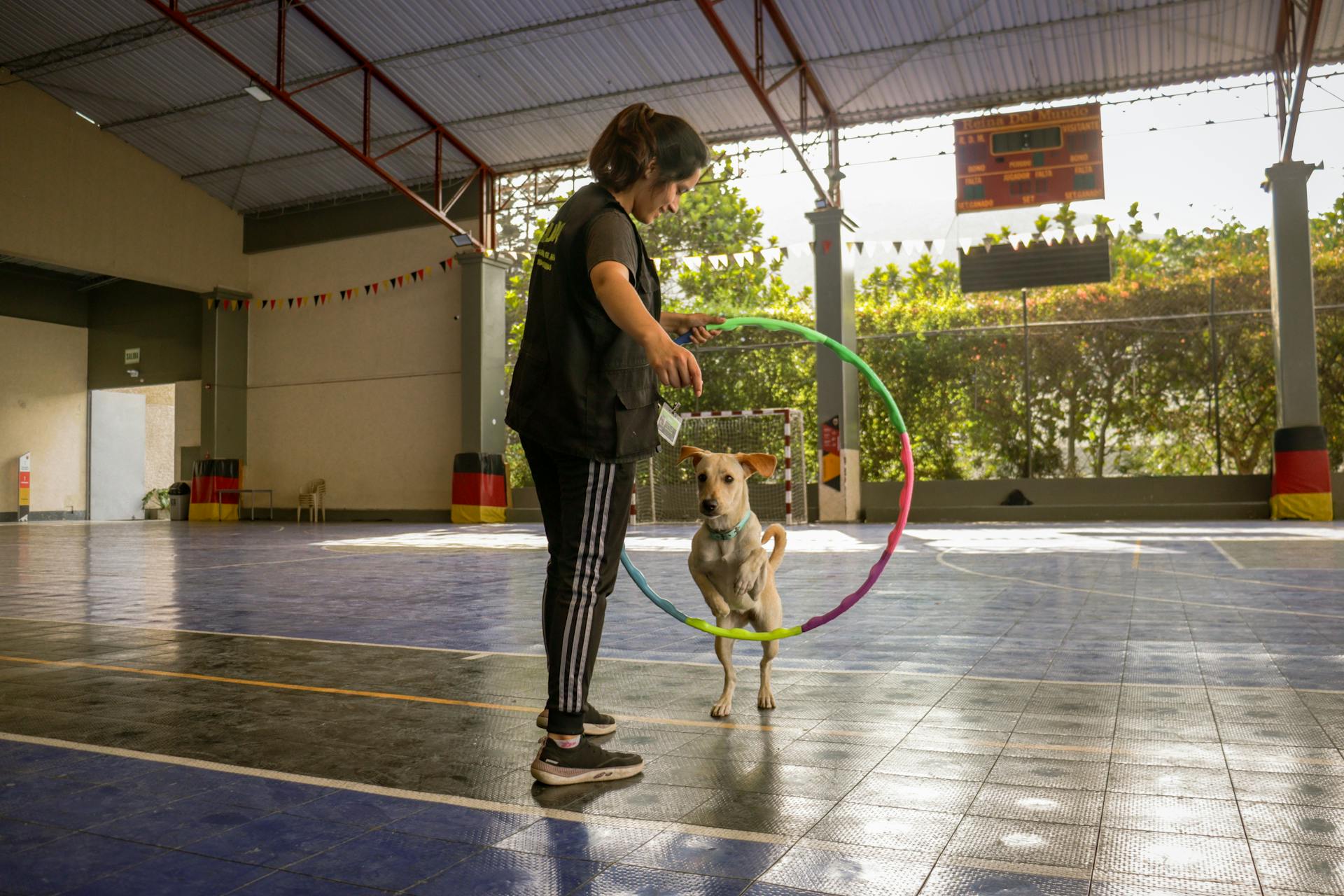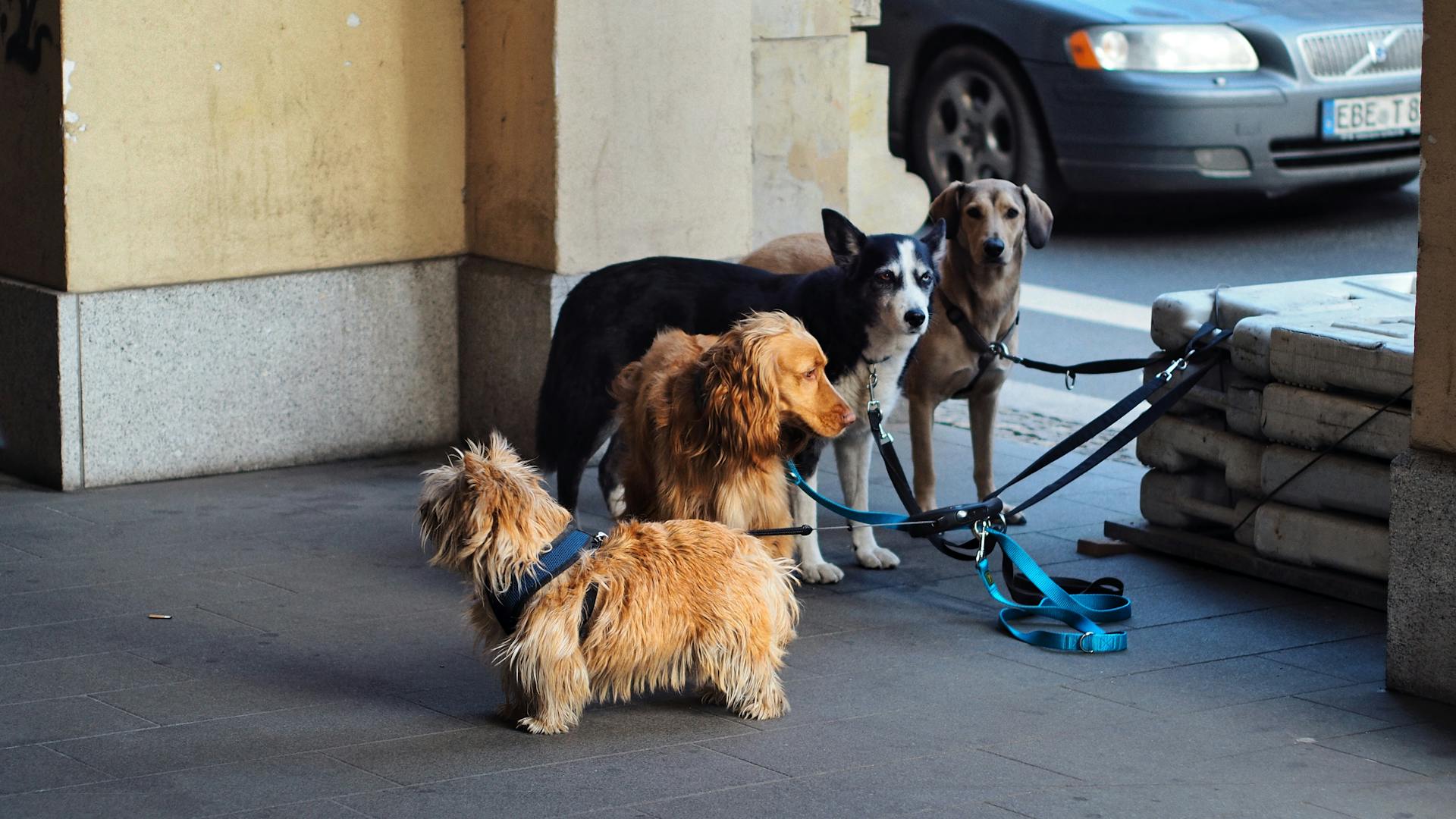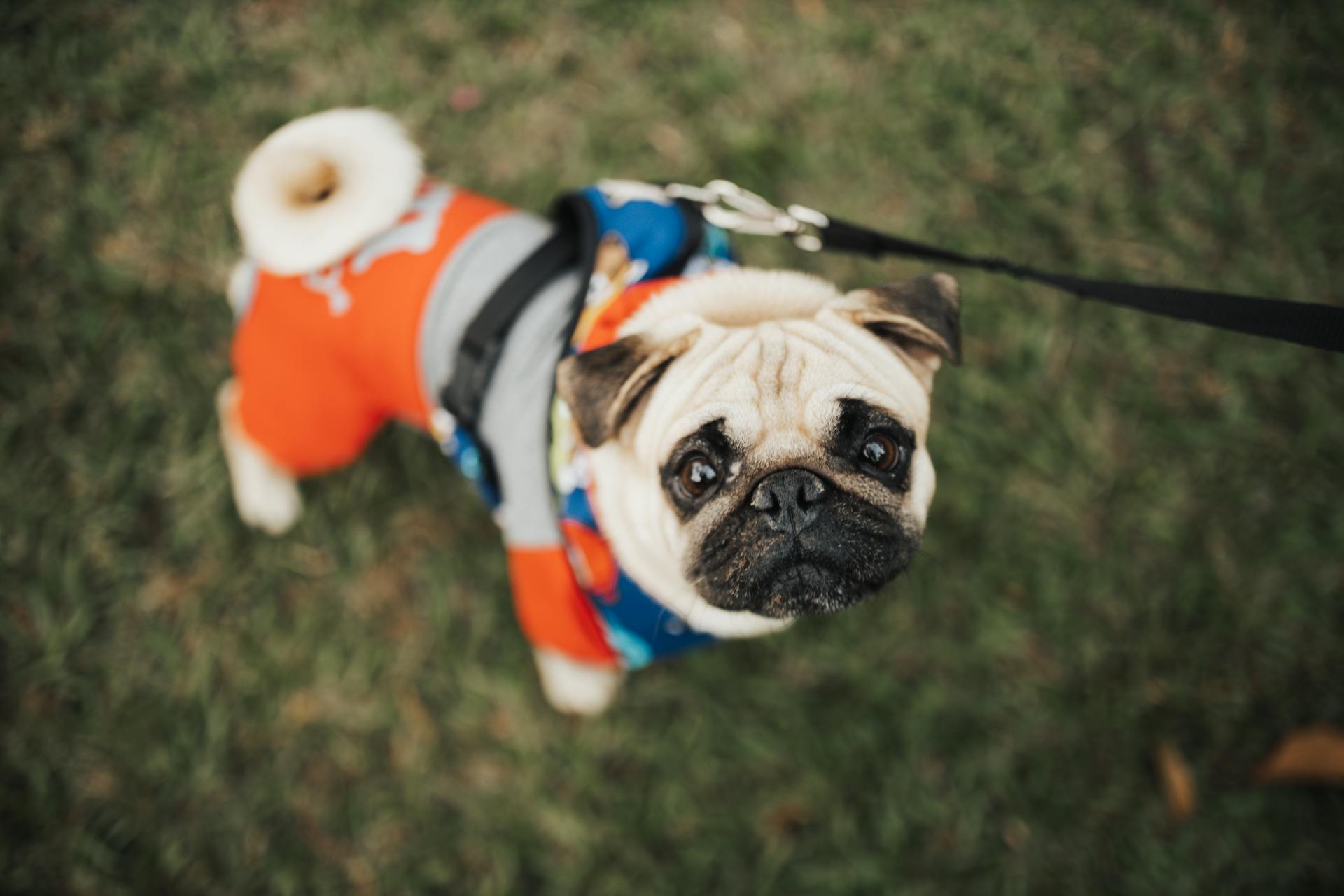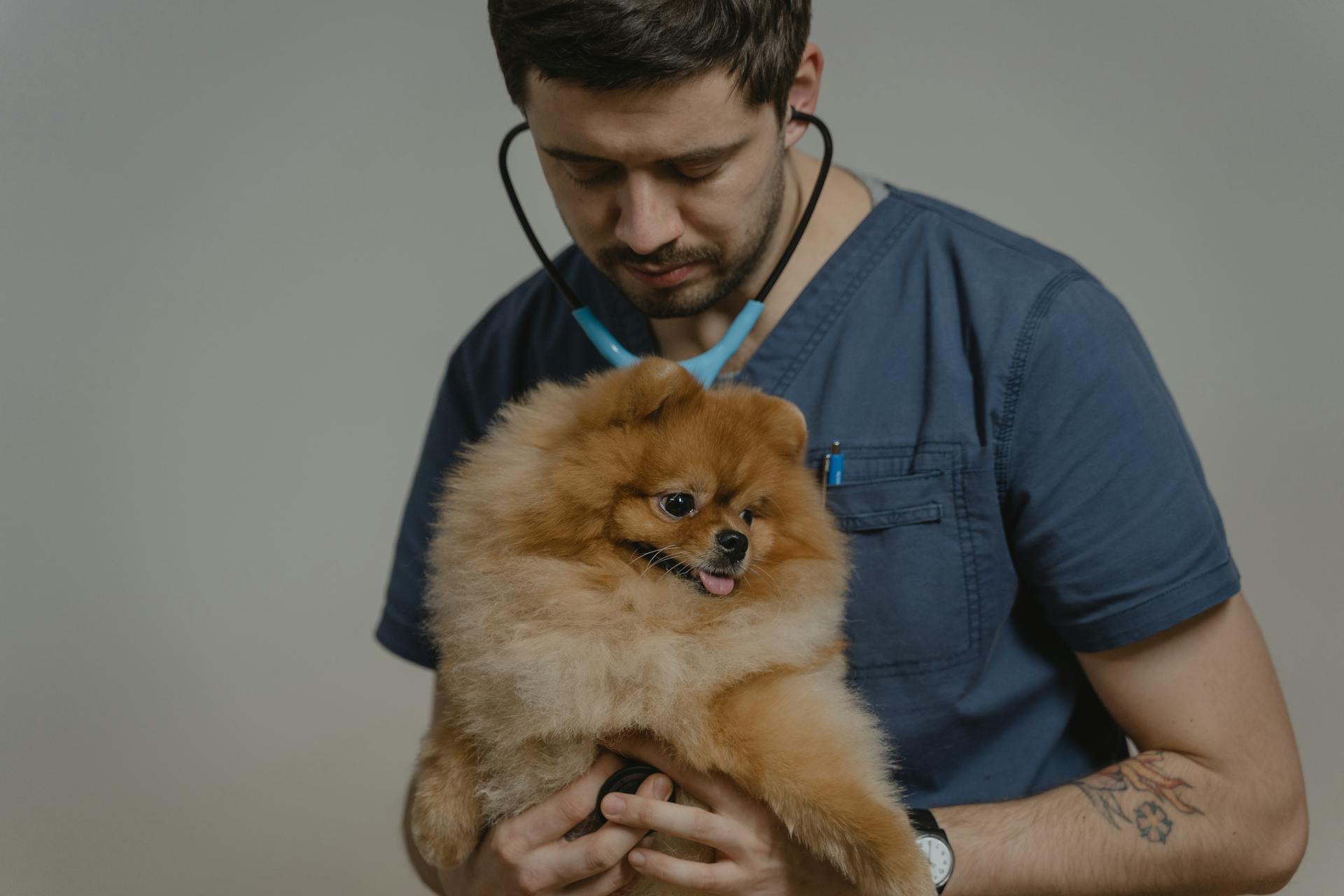
Having a consistent dog training schedule is key to establishing a routine and good habits for both you and your furry friend. A well-planned schedule helps prevent confusion and ensures that your dog learns what's expected of them.
To create an effective schedule, start by identifying your dog's age, breed, and any specific needs they may have. This will help you tailor your training to their unique requirements.
Set aside dedicated time for training, ideally twice a day, with sessions lasting around 10-15 minutes. This frequency and duration allow for focused learning without overwhelming your dog.
Establish a Routine
Establishing a routine is crucial for your puppy's development and training. A consistent schedule helps your puppy feel secure and builds their confidence.
Puppies thrive on predictability, so it's essential to create a daily routine that includes regular times for potty breaks, meals, playtime, and training. A sample 24-hour schedule can be a great starting point, but remember to adjust it according to your puppy's needs and your lifestyle.
A typical day for your puppy should include regular potty breaks, such as after waking up, after meals, and before bedtime. These breaks should be taken to the same spot each time to help your puppy learn to associate that area with eliminating.
Here's a breakdown of a typical day for your puppy:
Remember to also include regular exercise, playtime, and training sessions throughout the day. Socialization, obedience training, and life skills training are also essential for your puppy's development.
A consistent crating routine can also help with potty training and other aspects of your puppy's development. This routine should follow a rhythm of confinement, elimination, exercise, learning, and fun, with regular opportunities for your puppy to eliminate after eating and during transitions from one activity to another.
By establishing a routine and sticking to it, you'll be well on your way to raising a well-behaved and polite dog.
Training and Habits
Training your puppy is all about creating good habits and consistency. The more opportunities you give your puppy to go outside, the easier it will be for them to learn to go potty outside.
Take a look at this: Training Dog to Pee outside
You should train your puppy throughout the day, not just at one specific time. It's best to train your puppy after their meals, naps, and playtime.
To create a consistent routine, you can follow a puppy training schedule. A 12-week-old puppy's daily schedule will typically include frequent toilet breaks, playtime, and training sessions.
Here's a rough outline of what a puppy training schedule might look like:
Remember, consistency is key when it comes to training your puppy. The more you stick to a routine, the easier it will be for your puppy to learn good habits.
Crate Training
Crate training is essential for establishing a daily routine for your puppy.
You can create your own effective training schedule by understanding the basic principles, and they're not hard.
The times in the crating and feeding schedule template are just examples, so you'll need to adjust them to fit your household's needs.
Once you establish your puppy's crating routine, you can introduce other behavior training as well.
Pet Care and Well-being
Having a predictable routine is essential for your puppy's well-being, especially when it comes to feeding. Puppies need a feeding schedule to get their metabolism in tune with predictable eating times.
Establishing a feeding schedule also helps with training and home-alone training exercises. What comes in must go out, so having a good idea of when they might need the toilet will be of great help to plan out the rest of your day.
Teaching your puppy to be happy at home alone takes time and consistency, just like building a muscle. You can start by gradually increasing the time you leave them alone, but be sure to follow your guide to puppy separation anxiety tips for more information.
A unique perspective: Dog Training in My Home
Feeding My Pet
Having a feeding schedule is crucial for your pet's well-being, especially for puppies.
Puppies need a feeding schedule to get their metabolism in tune with predictable eating times.
A good feeding schedule helps with all other training and routines, like training and home-alone training exercises.
Remember, what comes in must go out, so having a plan for when they might need to use the toilet is essential.
This helps you plan the rest of your day and ensures your pet's needs are met.
If this caught your attention, see: Dog Training Basic Obedience Lesson Plan
Why Does My Pet Need Sleep?
Having a sleep schedule for your pet is essential for their overall well-being.
A regular sleep schedule allows your pet to hit reset and get them on their feet to start fresh for more learning and developing.
Pets that don't get enough sleep can become fractious or irritable, making them more prone to biting and mouthing.
Following a sleep schedule also helps your pet process new information they've taken in throughout the day, making it easier for them to learn and adapt.
Let's be honest, having some time away from your pet can be beneficial for both of you - it allows you to catch a breather and recharge.
Here are some benefits of a regular sleep schedule for your pet:
- Less inclined to bite and mouth
- Easier time processing new information
- Time for you to catch a breather
Teaching Pets to be Happy Alone
Teaching your pet to be happy alone is crucial for their well-being and yours. A sleep schedule or set nap times allows your pet to hit reset and get them on their feet to start fresh for more learning and developing.
Puppies, in particular, have evolved to be with other dogs and humans, making them cry out when they're alone and distressed. It's a strong survival mechanism that needs building, day after day, little by little.
Following a sleep schedule can help your pet be less fractious or irritable, and less inclined to bite and mouth you. They'll also have an easier time processing all of the new information they've taken in throughout the day.
With consistent training and practice, your pet will learn to be happy at home alone. It's like building a muscle that needs exercise to grow stronger.
Here are some benefits of teaching your pet to be happy alone:
- They'll have an easier time processing new information
- They'll be less fractious or irritable
- They'll be less inclined to bite and mouth you
- You'll have some time away from them, which can be beneficial for both you and your pet
Remember, teaching your pet to be happy alone takes time and patience, but it's worth it for their well-being and yours.
Socialization and Training
Socialization and Training is a crucial part of your puppy's development, and consistency is key. To achieve this, it's essential to train your puppy throughout the day, at the same times every day.
For another approach, see: Dog Day Training
The easiest times to remember to train your puppy are usually: first thing in the morning, after their post breakfast wee, after their mid-morning nap, before brunch, after their afternoon nap, before dinner time, and before supper.
Training your puppy at these times will help establish a routine and make it easier to remember to train them. You can use their food as rewards, making it a win-win situation for both you and your puppy.
Socialization is another critical aspect of your puppy's development, and it's essential to continue socializing your puppy even after the 12-week mark. This will help your puppy build up a knowledge bank of experience and interact with different kinds of animals and people.
You can socialize your puppy by exposing them to various environments, people, and animals, even after the 12-week point. This will help your puppy become confident and calm in new situations.
Here are some convenient times to train your puppy, which you can use as a starting point to create your own schedule:
- First thing in the morning (around 7am)
- After their post breakfast wee
- After their mid-morning nap
- Before brunch (around 11)
- After their afternoon nap
- Before dinner time (around 3pm)
- Before supper (around 7pm)
Example and Progress
Let's take a closer look at how this 8-week puppy training schedule works.
You can start socializing your puppy as early as week one, by letting them explore the yard and teaching them about surfaces. This is a great way to get them used to new sights and sounds.
Socialization exercises are a crucial part of this schedule, and they're tailored to your puppy's age and abilities. For example, in week two, you'll be introducing your puppy to the vacuum cleaner and fireworks.
Here's a breakdown of the socialization exercises for each week:
As you can see, each week builds on the previous one, introducing new experiences and exercises to help your puppy grow and develop.
This schedule also includes life skills training, which starts with teaching your puppy their name and basic commands like sitting and recall. By the end of week 8, your puppy should be able to perform a range of skills, including down, waiting, and leash walking.
Husbandry tasks, like brushing, handling, and grooming, are also an important part of this schedule. You'll be introducing these tasks gradually, starting with simple exercises like brushing and handling.
Family-Friendly Solution
You can set up a small puppy-proof area or room using a puppy pen or dog gate, which is perfect for those times when you can't supervise your puppy 100 percent.
Having a puppy pen or dog gate can be a lifesaver when you're busy with daily activities like cooking dinner, watching TV, or folding laundry.
You can put your puppy in his 'play pen' or tether him nearby so he can still be a part of the action, even when you're not fully supervising him.
A different take: When to Start Dog Obedience
It's essential to give your puppy a chance to empty every so often, and then devote several minutes of focused attention and supervision to help him develop good house habits.
Setting a timer on your kitchen clock, phone, or smart speaker can be a great way to remind yourself to stop for 'puppy time' if necessary.
Frequently Asked Questions
How many days a week should a dog be trained?
Training a dog 1-2 times a week can be as effective as daily training, with both methods yielding similar results after four weeks. However, the optimal training frequency may depend on individual factors, such as the dog's age, breed, and learning style.
How many training sessions a day should a dog have?
Train your dog 2-5 minutes, 2-3 times a day, with short sessions that end on a high note
Sources
- Potty Training Planner: Our Ultimate Guide To House Training ... (levelupdogtraining.com)
- Complete Puppy Training Schedule by Age! (thepuppyacademy.com)
- Week-by-week Puppy Training Schedule for 8-16 Weeks Old (zigzag.dog)
- How to Create a Crate Training Schedule for a New Puppy ... (orvis.com)
- 12-Week Puppy Training Schedule - Zigzag (zigzag.dog)
Featured Images: pexels.com


